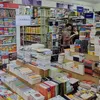‘The omnipresence of creativity is a mirror of the human existence’: Sanjana Shah, Tao Art Gallery
In our second photo essay from Mumbai’s outstanding Tao Art Gallery, we feature a range of artworks and curator insights on creativity.
Launched in 2014, PhotoSparks is a weekly feature from YourStory, with photographs that celebrate the spirit of creativity and innovation. In the earlier 765 posts, we featured an art festival, cartoon gallery, world music festival, telecom expo, millets fair, climate change expo, wildlife conference, startup festival, Diwali rangoli, and jazz festival.
The Tao Art Gallery in Mumbai recently exhibited the works of experimental multi-media artist Seema Kohli (see our earlier coverage here). The gallery team is headed by acclaimed artist Kalpana Shah, Sanjana Shah (Creative Director), and Urvi Kothari (Gallery Manager).

The exhibitor lineup at the gallery, some of whose works are featured in this photo essay, also includes SH Raza, Kisalay Vora, Sanjay Kumar, Vipul Prajapati, Smita Mandlik, and Bharti Verma.
Seema Kohli’s exhibition was titled When the Moon is Nine Months Full. In some of her paintings, she pays homage to the women of the Chipko movement in the Gharwal Himalayas during the 1970s.
Kohli has had over 20 solo and 250 group shows in India, Europe and the US. Her works explore themes of spirituality, beauty, and sensuality—often featuring the twin forces of creation and destruction.

“The contemplation of Kaal or time, is central to my practice. The aspects of continuity, repetition, vulnerability, duration, temporality, awareness, situation, and public participation are inherent qualities that inform my art practice,” Kohli describes.
Her works embrace various media elements: wood, bronze and canvas. Across media, her messages of spiritual eco-feminism and equitable development shine through.
As trends in India’s art industry, Kalpana Shah sees many exciting experiences with technology. “They are opening up creativity and getting more boost with experimental and immersive art experiences,” she observes.

“I also see an increase in the use of mixed media, a more three-dimensional visual language as opposed to conventional artistic mediums,” she adds.
The next few months of summer at the gallery will be centred around giving a chance to some of the new artists Sanjana Shah has found through her explorations. “One such project is the group show ‘Kaleidoscope’ scheduled to open in May,” she says.
Looking back, over the past few years, she feels the pandemic has fuelled the art industry and the perception around creativity in the minds of the audience. “People are more excited to collect art for their homes,” she observes.

People can also consume art from anywhere in the world in the digital medium. “It makes it more accessible and inclusive, and that is a trend that has definitely continued post the pandemic,” she adds.
“The outburst of creativity on different platforms, especially online, has thrived and continues to thrive. I think today art is even more about resonating our experiences as a society and a global community,” she describes.
“The omnipresence of creativity is a mirror of the human existence,” Shah signs off, highlighting its cyclical and linear nature.
Now, what have you done today to pause in your busy schedule and harness your creative side for a better world?














(All photographs were taken by Madanmohan Rao on location at the exhibition.)
Edited by Suman Singh









